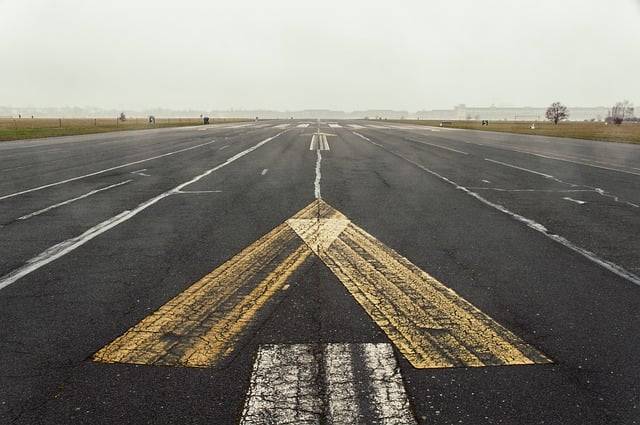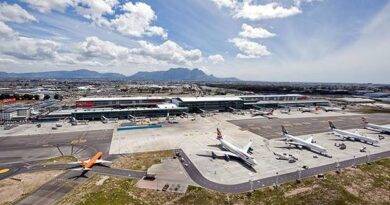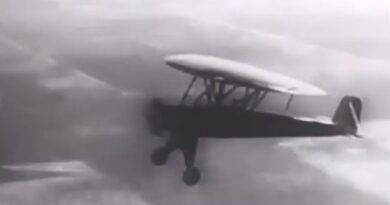The Importance of Cleaning Tire Tracks on Airport Runways
Airport runways are critical components of the aviation industry, ensuring the safe takeoff and landing of aircraft. One often overlooked aspect of runway maintenance is the cleaning of tire tracks. This process is vital for several reasons, ranging from safety concerns to financial implications. In this article, we will explore why cleaning tire tracks on airport runways is essential and how it contributes to the overall efficiency of airport operations.
Safety First: Preventing Accidents
Skid Resistance
One of the primary reasons for cleaning tire tracks on runways is to maintain skid resistance. Over time, rubber deposits from aircraft tires accumulate on the runway surface, creating a slippery layer that can significantly reduce friction. This reduction in friction can be particularly hazardous during wet conditions, increasing the risk of aircraft skidding during landing or takeoff. Regular cleaning ensures that the runway maintains its skid resistance, providing a safer surface for aircraft operations.
Visibility
Clean runways enhance the visibility of important markings, such as centerlines and touchdown zones. These markings are crucial for pilots during landing and takeoff, guiding them to ensure they are on the correct path. Accumulated tire tracks can obscure these markings, potentially leading to confusion and errors during critical phases of flight. Regular cleaning helps keep these markings clear and visible, aiding pilots in safe navigation.
Economic Benefits
Reduced Maintenance Costs
Allowing tire tracks to build up on runways can lead to more significant maintenance issues over time. The rubber deposits can cause surface deterioration, leading to cracks and other damages that require costly repairs. By routinely cleaning the tire tracks, airports can prevent these damages, extending the lifespan of the runway and reducing the need for expensive maintenance work.
Improved Operational Efficiency
Clean runways contribute to the overall efficiency of airport operations. Runways free from excessive tire tracks can handle more aircraft movements safely and efficiently. This efficiency is crucial for busy airports that need to manage a high volume of flights daily. Delays caused by runway maintenance or accidents due to slippery surfaces can lead to significant financial losses and operational disruptions.
Environmental Considerations
Pollution Control
The rubber residue left by aircraft tires can contribute to environmental pollution. Regular cleaning helps remove these pollutants, preventing them from being washed into nearby water sources during rain. By maintaining clean runways, airports can reduce their environmental impact and comply with regulations regarding pollution control.
Sustainable Practices
Implementing routine cleaning practices for tire tracks is part of a broader commitment to sustainability. Airports that prioritize regular maintenance demonstrate their dedication to sustainable operations, which can enhance their reputation and attract environmentally-conscious airlines and passengers.

Methods of Cleaning Tire Tracks
- High-Pressure Water Blasting
One of the most effective methods for cleaning tire tracks is high-pressure water blasting. This technique uses high-pressure water jets to remove rubber deposits without damaging the runway surface. It is efficient and environmentally friendly, as it does not involve the use of harmful chemicals. - Chemical Cleaning
In some cases, chemical cleaning agents are used to break down rubber deposits. While effective, this method requires careful handling and disposal of chemicals to avoid environmental harm. It is typically used when high-pressure water blasting is insufficient. - Mechanical Removal
Mechanical methods involve the use of specialized equipment to scrape off rubber deposits. This method can be effective but must be done carefully to avoid damaging the runway surface.
Conclusion
The importance of cleaning tire tracks on airport runways cannot be overstated. From enhancing safety and visibility to reducing maintenance costs and supporting environmental sustainability, regular runway cleaning is a crucial aspect of airport operations. By prioritizing this maintenance task, airports can ensure safer, more efficient, and environmentally friendly operations, ultimately benefiting airlines, passengers, and the surrounding community.
References:
- Federal Aviation Administration. (2017). Airport Design. Retrieved from https://www.faa.gov/documentLibrary/media/Advisory_Circular/150_5300_13A_Chg1.pdf
- International Civil Aviation Organization. (2011). Aerodrome Design Manual Part 2. Retrieved from https://www.icao.int/safety/aerodromeops/AerodromeDesignManualPart2.pdf
- Transport Canada. (2015). Airport Runway Maintenance. Retrieved from https://www.tc.gc.ca/eng/policy/transportation-canada-policy-vol-2-marine-safety/policy-chapter-314.html
- www.aviationfile.com


